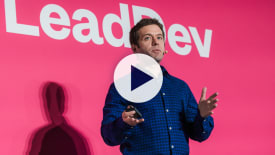Register or log in to access this video
Discover how the Financial Times used AI to personalise paywalls and reduce churn – along with the architecture, trade-offs, and unexpected side effects of applying machine learning to real business-critical decisions.
Over the past year, the FT has partnered with two external AI providers to deliver large-scale machine learning projects focused on subscriber acquisition and retention. By using predictive models to personalise user journeys on FT.com, we’ve more than doubled our projected lifetime revenue per customer.
In this talk, I’ll walk through the real-world implementation of AI at a media organisation – what worked, what didn’t, and what we’d do differently. You’ll get a behind-the-scenes look at our architecture for integrating Sub(X) into the paywall, and how we navigated unintended consequences, like a risk to advertising revenue we initially handled the wrong way. I’ll also share how we tackled churn reduction with a different AI model built by VectorLabs, which runs on our own infrastructure – and the unique technical and operational challenges that came with that.
Finally, I’ll offer hard-earned lessons on evaluating and maintaining AI in production: how to adapt to disruptions like price changes, what to monitor during model training, and how we revisited our approach to testing to cope with the explosion of possible user journeys AI introduced. Whether you’re considering an AI initiative or already running one, this talk will give you a clear-eyed look at the trade-offs, stakeholder dynamics, and surprising complexity that come with applying machine learning in a real business context.
Key takeaways
- Why we chose different AI providers and model architectures for acquisition vs. retention – and what we learned from that decision
- Strategies to minimise risk and build stakeholder confidence when integrating AI into critical user journeys
- Practical techniques for evaluating models that continuously adapt and evolve





